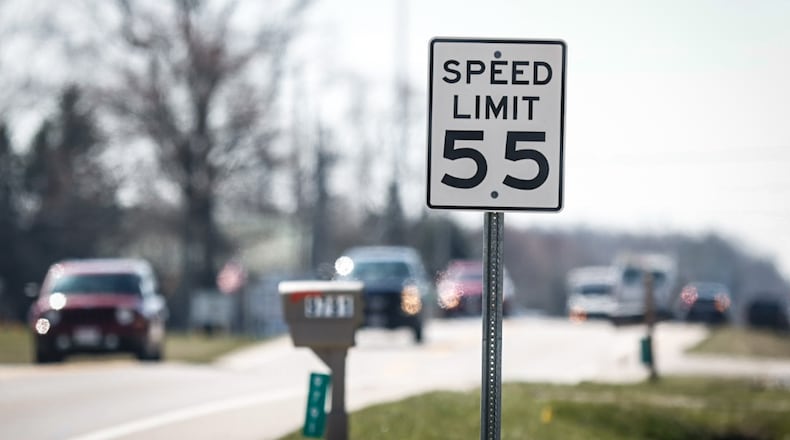The types of roads that could be affected include Troy Pike (Ohio 202) north of Huber Heights, Ohio 48 in Washington Twp. south of Centerville, Ohio 63 as it runs past the Lebanon Correctional prison, and much of Ohio 41 between Springfield and Troy.
The $11 million-plus two-year transportation budget (House Bill 23) was approved by the Ohio House of Representatives earlier this month and is now before the Ohio Senate, where this new amendment was added.
The last time Ohio highway speed limits were increased was in 2013 when the state increased the speed limits from 65 mph to 70 mph on rural interstates and other freeways in state.
John Fortney, spokesman for the Ohio Senate Republicans, said, “we’ll know by the end of the week.” Final amendments will be added Thursday, when the bill is scheduled for a vote. Next week, it will be in conference committee between the Ohio House and Senate. The transportation budget needs to be passed by the end of the month, Fortney said.
Statehouse media outlets reported last week that State Sen. Stephanie Kunze of Dublin, chairwoman of the Senate Transportation Committee, said the committee members wanted to hear from ODOT and the Ohio Department of Public Safety and others before passing the bill. Kunze could not be reached for comment for this story.
State Rep. Adam Mathews, R-Lebanon, was a co-sponsor of House Bill 23 and supports increasing the speed limits.
“We have to balance the freedom of movement with road conditions and safe traffic patterns,” Mathews said. “We want to see people get from one place to another safely.”
Robert Cornwell, executive director of the Buckeye State Sheriffs Association, said they would oppose increasing the speed limit. He was concerned this will add additional burdens to overstretched sheriff’s offices if increased speeds cause more crashes to happen.
“Most people already exceed the 55 mph speed limit,” he said. “The OSP (Ohio State Highway Patrol) put together a presentation that increasing the speed limit would have a notable increase, more than 20% in crashes and in fatalities.”
According to the Ohio State Highway Patrol website, there have been more than 1.41 million crashes in Ohio from 2018 through March 20, 2023.
“It’s not worth raising the speed limit to get somewhere five minutes sooner,” Cornwell said.
The speed limit increase was revealed late last week after the bill was introduced and assigned to the Senate Transportation Committee, and some organizations haven’t reviewed the proposed amendments.
Matt Bruning, ODOT press secretary, said, “We just got this last week and we’re still evaluating and analyzing it.”
Sgt. Tyler Ross, an Ohio State Highway Patrol public information officer, declined to comment on the proposed legislation because the highway patrol doesn’t comment on pending legislation.
Warren County Sheriff Larry Sims and State Rep. Rodney Creech agreed with Cornwell’s concerns.
“As a sheriff, I don’t see any reason or justification to see speed limits increased,” Sims said.
Creech, a Republican from Preble County, said he spends a lot of time talking with local police and state police.
“People are already driving excessively over the speed limits,” Creech said. “And so for me, I don’t understand why we’re going to raise the speed limits. They’re going to drive that much more excessive. ... It’s going to be something hard for me to support especially when our police agencies are against it.”
State Rep. Tom Young, R-Washington Twp., also said, “I’m not for increasing the speed of any vehicle on any road at this time in Ohio.”
Kara Hitchens, AAA Ohio manager of public relations and government affairs, said AAA is considering giving testimony against raising the speed limits.
In 2021, AAA said that small speed increases can have huge impacts on crash outcomes and cancel the effectiveness of vehicle safety features, according to new crash tests by the AAA Foundation for Traffic Safety, the Insurance Institute for Highway Safety (IIHS) and Humanetics.
The organizations partnered to study the damage from crashes at three different impact speeds (40, 50 and 56 mph). The results showed slightly higher speeds were enough to increase the driver’s risk of severe injury or death.
About the Author



